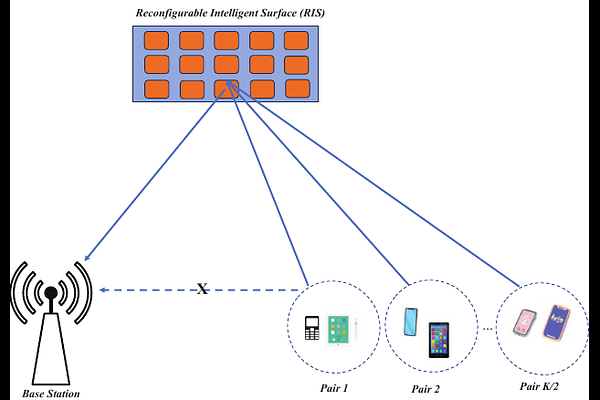Min-max Decoding Error Probability Optimization in RIS-Aided Hybrid TDMA-NOMA Networks

Min-max Decoding Error Probability Optimization in RIS-Aided Hybrid TDMA-NOMA Networks
Tra Huong Thi Le, Yan Kyaw Tun
AbstractOne of the primary objectives for future wireless communication networks is to facilitate the provision of ultra-reliable and low-latency communication services while simultaneously ensuring the capability for vast connection. In order to achieve this objective, we examine a hybrid multi-access scheme inside the finite blocklength (FBL) regime. This system combines the benefits of non-orthogonal multiple access (NOMA) and time-division multiple access (TDMA) schemes with the aim of fulfilling the objectives of future wireless communication networks. In addition, a reconfigurable intelligent surface (RIS) is utilized to facilitate the establishment of the uplink transmission between the base station and mobile devices in situations when impediments impede their direct communication linkages. This paper aims to minimize the worst-case decoding-error probability for all mobile users by jointly optimizing power allocation, receiving beamforming, blocklength, RIS reflection, and user pairing. To deal with the coupled variables in the formulated mixed-integer non-convex optimization problem, we decompose it into three sub-problems, namely, 1) decoding order determination problem, 2) joint power allocation, receiving beamforming, RIS reflection, and blocklength optimization problem, and 3) optimal user pairing problem. Then, we provide the sequential convex approximation (SCA) and semidefinite relaxation (SDR)-based algorithms as potential solutions for iteratively addressing the deconstructed first two sub-problems at a fixed random user pairing. In addition, the Hungarian matching approach is employed to address the challenge of optimizing user pairing. In conclusion, we undertake a comprehensive simulation, which reveals the advantageous qualities of the proposed algorithm and its superior performance compared to existing benchmark methods.